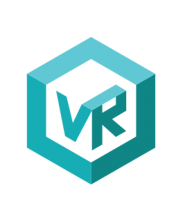At this year’s VR World Congress, we were incredibly happy to have Piers Harding-Rolls from world-leading analyst firm IHS speak on the main conference talk track. Piers’ talk proved to be a highlight of the conference, presenting a fascinating array of analysis on the present and future of virtual reality.
We encourage anyone with an interest in VR to check out his brilliant VRWC talk (it's embedded at the bottom of this page), but for those who prefer something quick and easily digestible, we’ve compiled ten key takeaways:
*Please note: these numbers stem from a talk given in April of 2016 and analysis is representative of that point in time*
-
Direct consumer spending on entertainment is growing. €381 billion this year, with videogames and interactive content carving out an ever-increasing percentage of this figure (around 20%). The broadening adoption of interactive content aligns strongly with VR entertainment and gives VR a rather sizeable market to break into, so there’s certainly an audience.
-
149% expected increase in annual shipments of adapter VR headsets from 2015 to 2016. While a lot of the talk at the moment is centered on Sony, Oculus and HTC/Valve, Piers notes that so called ‘adapter headsets’ (i.e. Gear VR or Google Cardboard/Daydream) will see a huge spike in uptake over the course of 2016. We’ve already seen a lot of growth in the first half of the year and with Google rolling out Daydream soon, expect to see even more.
-
79% of adaptor headsets given away in bundles (not paid-for). This is an interesting statistic, although given Samsung’s Galaxy S7 with Gear VR bundle it’s hardly a surprise. It’s clear many smartphone manufacturers are looking to adaptor headsets to drive interest to their latest smartphones, which helps with adoption - but it’s content that will keep these people using their headsets.
-
14 million headsets in 2016, 22 million by 2017. You can’t get far into a conversation about virtual reality without a prediction as to the number of headsets that will be out in the wild in the near future. The IHS analysis is pretty sensible, indicating a steady growth for the medium as devices reach a more mass market audience.
-
Expected install base share: Console: 12%, PC: 7%, Mobile: 81%. Now this certainly puts things into perspective. Although the rather vocal Sony, Oculus and (to a lesser extent) HTC/Valve do a great job of getting their respective devices into the hands and articles of the press, IHS predicts that mobile VR will dominate the consumer market. Given the price of high-end VR, this is what you would expect - although that 12% console prediction is a point of interest.
-
Various other headsets to gain 44% market share, Cardboard next with 21%. Another slightly surprising estimation given the amount of noise made by the bigger manufacturers, but it’s perhaps easy to believe that unofficial and official Cardboard headsets will dominate over the next year or so. Piers notes that this is in part due to the fact that people can passively consume free entry-level VR content on Cardboard and the like. However, there’s less opportunity for monetisation in this area - although that’s not to say the right project can’t make a tidy profit.
-
Premium VR games to be a €1 billion market by 2018. It’s worth putting this into perspective next to the $100 billion wider gaming market, but it would still be an impressive figure for a breakout medium. IHS believes that gaming will spearhead the premium VR drive and given what we’ve seen so far it’s hard to disagree.
-
Deviation from normal tastes in game genres. This is a fascinating game-central point that highlights how virtual reality demands a new perspective on the way people play videogames. Of all game downloads on Oculus Share, the vast majority have been exploration, simulation and casual games. Meanwhile fighting, RPG and shooter games sit much further down the list. Does this reflect the availability of certain genres on the platform? Yes - but that in and of itself demonstrates what devs prefer to create for VR.
-
Monetisation will be centred on high-end platforms that users buy into. This is in contrast to the current mobile gaming market and draws more comparisons to the console scene. Users are supposedly more likely to spend money on a device that they have to ‘buy into’. Safe to say that Sony, Oculus and HTC/Valve are banking on it.
-
There’s a vacuum of premium VR content at the moment, even in games, so it’s very much a low competition market. Well, at least in comparison with similar industries. VR’s relative youth makes it much less busy than general gaming and the like - although it’s clear to see the market growing exponentially month upon month.




